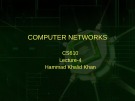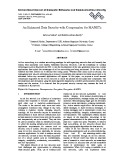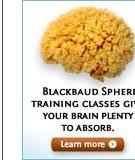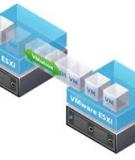
Concept of packets
-
Advanced Computer Networks: Lecture 23. This lecture will cover the following: concepts of networking & network programming; issues related to bits/frames sent on a single link; design issues of direct link networks; building a packet abstraction on a link;...
 21p
21p  haoasakura
haoasakura
 30-05-2022
30-05-2022
 23
23
 4
4
 Download
Download
-
Lecture Computer networks: Lesson 4 - Hammad Khalid Khan. The main topics covered in this chapter include: packets, frames and error detection; introduces the concept of packets; reasons for using packets; problems with the sharing; solution for fairness; Time-Division Multiplexing;...
 22p
22p  youzhangjing_1909
youzhangjing_1909
 28-04-2022
28-04-2022
 15
15
 3
3
 Download
Download
-
Lecture Windows programming - Lesson 27: Introduction to Network Programming. The main topics covered in this chapter include: concept of a packet of information; IP addresses and ports; the structure of an IP packet; connection-oriented vs. datagram protocols; IP, TCP and UDP; HTTP, other wrapper protocols;...
 12p
12p  wangziyi_1307
wangziyi_1307
 26-04-2022
26-04-2022
 13
13
 2
2
 Download
Download
-
Lecture Network programming - Chapter 1: Basic Network Concepts (Tran Thi Ha Trang) provide students with knowledge about network, the layer of a network, IP address, internet, internet standards, packet-switched networks, protocol, protocol in different layers of a network,...
 28p
28p  bachkhinhdaluu
bachkhinhdaluu
 10-12-2021
10-12-2021
 10
10
 3
3
 Download
Download
-
Chapter 6 - Delivery, forwarding, and routing of IP packets. This chapter describes the delivery and forwarding of IP packets. Delivery refers to the way a packet is handled by the underlying networks under the control of the network layer. Concepts such as direct and indirect delivery are discussed. Forwarding refers to the way a packet is delivered to the next station. We discuss two trends in forwarding: forwarding based on destination address of the packet and forwarding based on the label attached to the packet.
 58p
58p  nanhankhuoctai10
nanhankhuoctai10
 23-07-2020
23-07-2020
 16
16
 2
2
 Download
Download
-
In this paper, we propose a novel secured compression algorithm for an ad hoc network in which the packets are encrypted and compressed. The decompression and decryption using the same algorithm happens by a perfect synchronization between the sender and the receiver. It is observed that the proposed security concept may increase the level of confidence in this network.
 6p
6p  byphasse043256
byphasse043256
 23-03-2019
23-03-2019
 16
16
 1
1
 Download
Download
-
In this paper, we propose a solution for Long Term Evolution (LTE) mobile network based on the concept of NDN. By OPNET Modeler simulation, we carry out the evaluation in realistic mobile network with a huge number of mobility LTE mobile stations access to a single server, where content names and content sizes are obtained from real trace of Internet traffic. The obtained results show that Evolved Packet Core (EPC) caching scheme can helps to further increases the quality of service as well as offloads server traffic significantly.
 11p
11p  cumeo3000
cumeo3000
 01-08-2018
01-08-2018
 29
29
 0
0
 Download
Download
-
Chapter 3 - Transport layer. After reading this chapter, the reader should be able to: Understand the position of the transport layer in the internet model; understand the rationale for the existence of the transport layer; understand the concept of application-to-application delivery; understand the duties of the transport layer: packetizing, addressing, connection creation, and reliable delivery.
 25p
25p  nhanmotchut_2
nhanmotchut_2
 19-10-2016
19-10-2016
 60
60
 1
1
 Download
Download
-
This chapter describes the delivery and forwarding of IP packets. Delivery refers to the way a packet is handled by the underlying networks under the control of the network layer. Concepts such as direct and indirect delivery are discussed. Forwarding refers to the way a packet is delivered to the next station. We discuss two trends in forwarding: forwarding based on destination address of the packet and forwarding based on the label attached to the packet.
 38p
38p  tangtuy09
tangtuy09
 26-04-2016
26-04-2016
 48
48
 2
2
 Download
Download
-
In this chapter, you will learn to: Explain how ACLs are used to secure a medium-size enterprise branch office network, including the concept of packet filtering, the purpose of ACLs, how ACLs are used to control access, and the types of Cisco ACLs. Configure standard ACLs in a medium-size enterprise branch office network, including defining filtering criteria, configuring standard ACLs to filter traffic, and applying standard ACLs to router interfaces,...
 86p
86p  youcanletgo_01
youcanletgo_01
 04-01-2016
04-01-2016
 58
58
 5
5
 Download
Download
-
After completing this chapter, students will be able to: Describe the features and operation of EIGRP, examine the different EIGRP packet formats, calculate the composite metric used by DUAL, describe the concepts and operation of DUAL, examine the commands to configure and verify basic EIGRP operations for IPv4 and IPv6.
 58p
58p  youcanletgo_01
youcanletgo_01
 04-01-2016
04-01-2016
 56
56
 3
3
 Download
Download
-
This chapter describe the primary functions and features of a router, explain how routers use information in data packets to make forwarding decisions in a small to medium-sized business network, explain the encapsulation and de-encapsulation process used by routers when switching packets between interfaces,...
 54p
54p  youcanletgo_01
youcanletgo_01
 29-12-2015
29-12-2015
 40
40
 2
2
 Download
Download
-
This chapter describe the features and operation of EIGRP, examine the different EIGRP packet formats, calculate the composite metric used by DUAL, describe the concepts and operation of DUAL, examine the commands to configure and verify basic EIGRP operations for IPv4 and IPv6.
 53p
53p  youcanletgo_01
youcanletgo_01
 29-12-2015
29-12-2015
 38
38
 2
2
 Download
Download
-
Chapter 1 introduce to Routing and Packet Forwarding. This chapter identify a router as a computer with an OS and hard ware designed for the routing process. Demonstrate the ability to configure devices and apply addresses. Describe the structure of a routing table. Describe how a router determines a path and switches packets.
 41p
41p  youcanletgo_01
youcanletgo_01
 30-12-2015
30-12-2015
 46
46
 3
3
 Download
Download
-
Topology A Cisco 1841 router has the following interfaces: Two Fast Ethernet interfaces: FastEthernet 0/0 and FastEthernet 0/1 Two serial interfaces: Serial 0/0/0 and Serial0/0/1 l The interfaces on your routers can vary. Packet Tracer Activities are referenced throughout these chapters for additional practices.Unlike most user PCs, a router will have multiple network interfaces. l These interfaces can include a variety of connectors.
 110p
110p  vanmanh1008
vanmanh1008
 21-05-2013
21-05-2013
 66
66
 5
5
 Download
Download
-
Type: OSPF packet type: Hello (Type 1), DBD (Type 2), LS Request (Type 3), LS Update (Type 4), LS ACK (Type 5). Router ID: ID of the originating router. Area ID: Area from which the packet originated. Network Mask: Subnet mask associated with the sending interface. Hello Interval: Number of seconds between the sending router’s Hellos. Router Priority: Used in DR/BDR election (discussed later). Designated Router (DR): Router ID of the DR, if any. Backup Designated Router (BDR): Router ID of the BDR, if any. List of Neighbors: Lists the OSPF Router ID of the neighboring router(s)...
 111p
111p  vanmanh1008
vanmanh1008
 21-05-2013
21-05-2013
 50
50
 4
4
 Download
Download
-
Chapter 11 OSPF quangkien@gmail.com .For further information This presentation is an overview of what is covered in the curriculum/book. For further explanation and details, please read the chapter/curriculum. Book: Routing Protocols and Concepts By Rick Graziani and Allan Johnson ISBN: 1-58713-206-0 ISBN-13: 978-58713206-3 2 .
 111p
111p  vanmanh1008
vanmanh1008
 21-05-2013
21-05-2013
 66
66
 5
5
 Download
Download
-
Link-State Routing Process 1. Each router learns about its own links, its own directly connected networks. (Interface is “up”) 2. Each router is responsible for meeting its neighbors on directly connected networks. (OSPF Hello packets) 3. Each router builds a link-state packet (LSP) containing the state of each directly connected link. (neighbor ID, link type, and bandwidth) 4. Each router floods the LSP to all neighbors, who then store all LSPs received in a database. Neighbors then flood the LSPs to their neighbors until all routers in the area have received the LSPs. 5.
 51p
51p  vanmanh1008
vanmanh1008
 21-05-2013
21-05-2013
 65
65
 6
6
 Download
Download
-
In our experiments, 42 MICAz nodes were used. The experimentswere conductedwith multiple randomly generated layouts under two different scenarios: (i) an open parking lot, and (ii) an indoor office. In each sce- nario, two types of experiments were conducted: Fixed Single Sender and Round Robin Sender. In the Fixed Single Sender experiment, the sender was placed in the center of the topology, while the other 41 nodes were randomly deployed as receivers. The sender broadcasted a packet in every 200ms. Each packet was identified by a sequence number.
 12p
12p  nhacsihuytuan
nhacsihuytuan
 06-04-2013
06-04-2013
 42
42
 8
8
 Download
Download
-
Before we describe the investigation process, we need to define the basic and fundamental concepts. There are few agreed upon definitions in the area of digital forensic research, so we will clearly state the definitions we are using, even the most basic ones. Digital data are data represented in a numerical form. With modern computers, it is common for the data to be internally represented in a binary encoding, but this is not a requirement. A digital object is a discrete collection of digital data, such as a file, a hard disk sector, a network packet, a memory page, or a process....
 14p
14p  giamdocamnhac
giamdocamnhac
 06-04-2013
06-04-2013
 84
84
 4
4
 Download
Download
CHỦ ĐỀ BẠN MUỐN TÌM
































